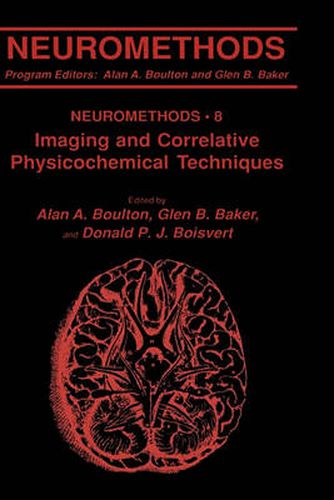Readings Newsletter
Become a Readings Member to make your shopping experience even easier.
Sign in or sign up for free!
You’re not far away from qualifying for FREE standard shipping within Australia
You’ve qualified for FREE standard shipping within Australia
The cart is loading…






This title is printed to order. This book may have been self-published. If so, we cannot guarantee the quality of the content. In the main most books will have gone through the editing process however some may not. We therefore suggest that you be aware of this before ordering this book. If in doubt check either the author or publisher’s details as we are unable to accept any returns unless they are faulty. Please contact us if you have any questions.
Recent years have seen remarkable advances in the devel- ment of techniques that have direct applications in neurological research. In consequence, the circulatory and metabolic status of the brain can be measured and correlated with changes m structure often noninvasively, m the same - and integrated function, perimental subIect This has stimulated an increased awareness of the complexity, under normal and pathological conditions, of the interdependence of these factors. Through the application of the methods described in this volume, however, these complexities can now be analyzed. The chapters m this volume present methodological - scriptions of some of the most powerful physicochemical methods for studymg the brain. Multidisciplmary teams are - quired to develop some of these methods, which are extremely expensive m terms of capital equipment costs and technological personnel support Thus, they will likely remain restricted to malor medical research centers Nevertheless, many recent concepts of brain responses to disease are a result of their application We have been fortunate m convincing active, leading sci- tists to contribute to this volume. The descrrptions of the basic prmciples of each method, and its applications and limitations, are derived primarily from their personal experiences. The first two chapters (Rowan, Auer) deal with methods for assessing brain hemodynamics. The two subsequent chapters (Greenberg; He- covitch) describe autoradiography and positron emission tomog- phy techniques, which provide quantitative measurements of brain metabolism as well as blood flow.
$9.00 standard shipping within Australia
FREE standard shipping within Australia for orders over $100.00
Express & International shipping calculated at checkout
This title is printed to order. This book may have been self-published. If so, we cannot guarantee the quality of the content. In the main most books will have gone through the editing process however some may not. We therefore suggest that you be aware of this before ordering this book. If in doubt check either the author or publisher’s details as we are unable to accept any returns unless they are faulty. Please contact us if you have any questions.
Recent years have seen remarkable advances in the devel- ment of techniques that have direct applications in neurological research. In consequence, the circulatory and metabolic status of the brain can be measured and correlated with changes m structure often noninvasively, m the same - and integrated function, perimental subIect This has stimulated an increased awareness of the complexity, under normal and pathological conditions, of the interdependence of these factors. Through the application of the methods described in this volume, however, these complexities can now be analyzed. The chapters m this volume present methodological - scriptions of some of the most powerful physicochemical methods for studymg the brain. Multidisciplmary teams are - quired to develop some of these methods, which are extremely expensive m terms of capital equipment costs and technological personnel support Thus, they will likely remain restricted to malor medical research centers Nevertheless, many recent concepts of brain responses to disease are a result of their application We have been fortunate m convincing active, leading sci- tists to contribute to this volume. The descrrptions of the basic prmciples of each method, and its applications and limitations, are derived primarily from their personal experiences. The first two chapters (Rowan, Auer) deal with methods for assessing brain hemodynamics. The two subsequent chapters (Greenberg; He- covitch) describe autoradiography and positron emission tomog- phy techniques, which provide quantitative measurements of brain metabolism as well as blood flow.